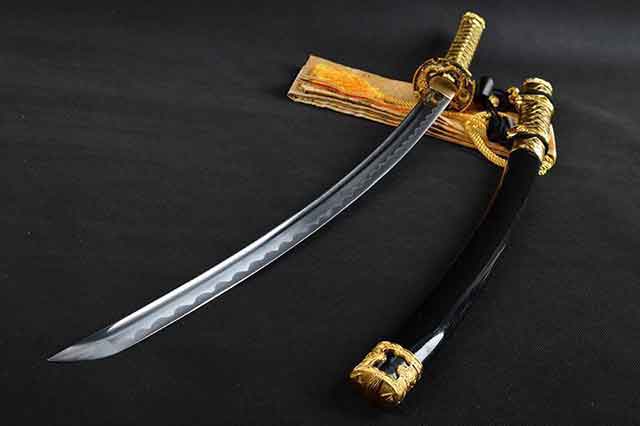
The samurai sword known as Tachi is one of the most iconic weapons in Japanese history. Its unique design and construction made it a popular choice among samurai warriors, and it played a significant role in many battles throughout Japan's history.
How Tachi Appeared
The early predecessor of the Japanese sword was known as warabitetō. During the Heian period (794–1185), the samurai improved on this design and developed the kenukigata-tachi, which is considered to be an early Japanese sword. It is believed that the Emishi were the first to improve on the warabitetō, developing both the kenukigata-warabitetō, which had a hole in the hilt, and the kenukigatatō, which lacked decorations on the tip of the hilt. The samurai later developed the kenukigata-tachi based on these swords. The kenukigata-tachi, which was developed in the first half of the 10th century, had a three-dimensional cross-sectional shape of an elongated pentagonal or hexagonal blade known as shinogi-zukuri and a gently curved single-edged blade, typical features of Japanese swords. The tang (nakago), which was integrated with the blade, was directly gripped and used, and there was no wooden hilt attached to the kenukigata-tachi. The term kenukigata comes from the fact that the central part of the tang was hollowed out in the shape of ancient Japanese tweezers (kenuki).
In the tachi developed after the kenukigata-tachi, a structure in which the hilt was fixed to the tang (nakago) with a pin called mekugi was adopted. As a result, a sword with three basic external elements of Japanese swords, the cross-sectional shape of shinogi-zukuri, a gently curved single-edged blade, and the structure of nakago, was completed. Its shape may reflect the changing form of warfare in Japan, where cavalry became the dominant fighting unit, and older straight chokutō swords were unsuitable for fighting from horseback. The curved sword was a far more efficient weapon wielded by a warrior on horseback, with the curve of the blade adding considerably to the downward force of a cutting action. According to historian Karl Friday, before the 13th century, there are no written references or drawings showing swords of any kind were used from horseback. However, according to Yoshikazu Kondo, from around the Genpei War in the 12th century, the use of tachi on horseback increased. Early models had uneven curves, with the deepest part of the curve at the hilt. As eras changed, the center of the curve tended to move up the blade.
From the Heian period, ordinary samurai wore swords of the style called kurourusi tachi (kokushitsu no tachi), which meant black lacquer tachi. The hilt of a tachi was wrapped in leather or ray skin, and it was wrapped with black thread or leather cord, and the scabbard was coated with black lacquer. On the other hand, court nobles wore tachi decorated with precisely carved metal and jewels for ceremonial purposes. High-ranking court nobles wore swords of the style called kazari tachi or kaza tachi, which meant decorative tachi, and lower-ranking court nobles wore simplified kazatachi swords of the style called hosodachi, which meant thin tachi.
Characteristics and Features of Tachi
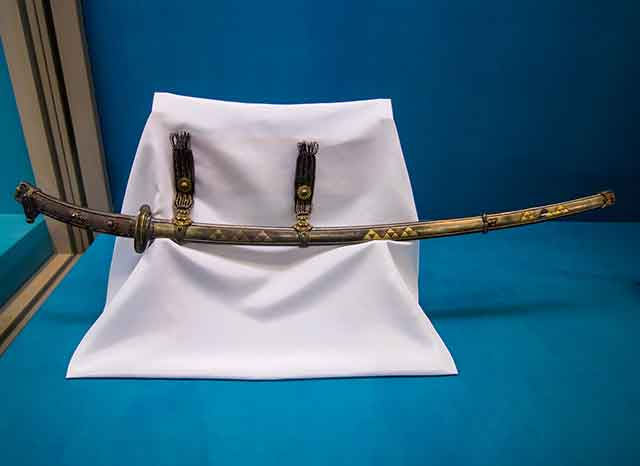
Except for a few cases, it is possible to differentiate between a katana and a tachi by the position of the signature (mei) on the tang. Usually, the signature is engraved on the side of the tang facing outward when the sword is worn on the left side of the wielder. As the tachi was worn with the cutting edge down and the katana with the cutting edge up, the mei would be located in opposite positions on the tang of both types of swords.
An authentic tachi typically had a cutting edge length of 70-80 cm (27+9⁄16–31+1⁄2 in) and, compared to a katana, was generally lighter in proportion to its length, more curved, and had a smaller point area for penetrating heavy clothing. It also had a greater taper from hilt to point. The tachi was mainly used by cavalry and was worn hanging from the belt with the cutting edge down, unlike the katana, which was worn at the waist.
Tachis that deviated from the average length had the prefixes ko- for "short" and ō- for "great, large" attached to their names. For instance, a tachi shōtō that was closer in size to a wakizashi was called kodachi. The longest tachi on record, considered a 15th-century ōdachi, had a total length of 3.7 meters (12 ft) with a blade length of 2.2 meters (7 ft 3 in), but it is believed to have been a ceremonial weapon. In the late 1500s and early 1600s, many tachi blades were converted into katana by shortening their tangs (o-suriage) and removing the smith signatures from the swords.
To wear a sword in tachi style, it needed to be mounted in a tachi koshirae. The tachi koshirae had two hangers (ashi) so that the sword could be worn horizontally with the cutting edge down. If a sword was not mounted in a tachi koshirae, it could be worn tachi style using a koshiate, a leather device that allowed any sword to be worn in the tachi style.
How Tachi was Used
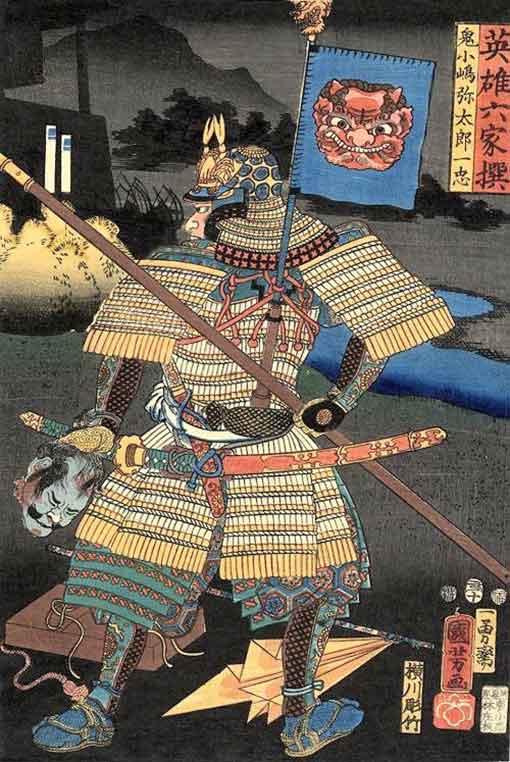
The Tachi was primarily used by samurai warriors as a cavalry sword, but it was also used in ground combat. The long, curved blade made it an effective weapon for slashing and cutting, and it was particularly effective against armored opponents.
During battles, samurai warriors would draw their Tachi swords and use them to strike at their enemies with lightning-fast speed. The weight of the sword and the samurai's skill and technique would combine to create a devastating blow that could cut through armor and even sever limbs.
In addition to its use as a weapon, the Tachi was also a symbol of the samurai's honor and prestige. Many samurai warriors would decorate their swords with intricate designs and symbols that represented their clan or family, and the sword was often passed down from generation to generation as a treasured family heirloom.
In conclusion, the Tachi sword is a testament to the skill and artistry of Japanese swordsmiths and samurai warriors. Its unique design and features made it a popular choice among samurai warriors, and it played a significant role in many battles throughout Japan's history. Today, the Tachi remains an important symbol of Japanese culture and tradition, and its legacy lives on in the hearts and minds of people around the world.
See also
-
Sojutsu - The Art of the Spear
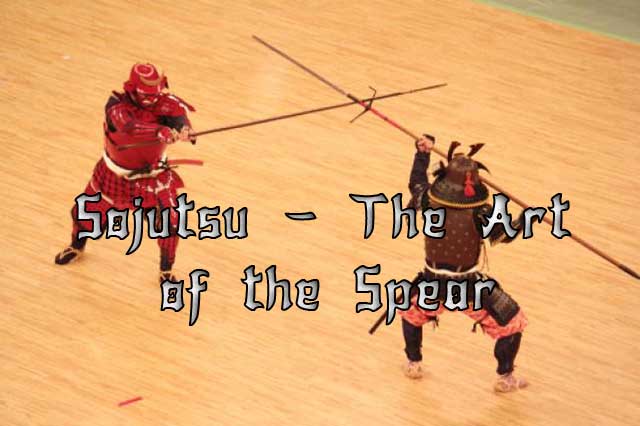
Sojutsu is a traditional Japanese martial art dedicated to the mastery of the yari spear. It is considered the second most important martial art of medieval Japan after swordsmanship.
-
Yari
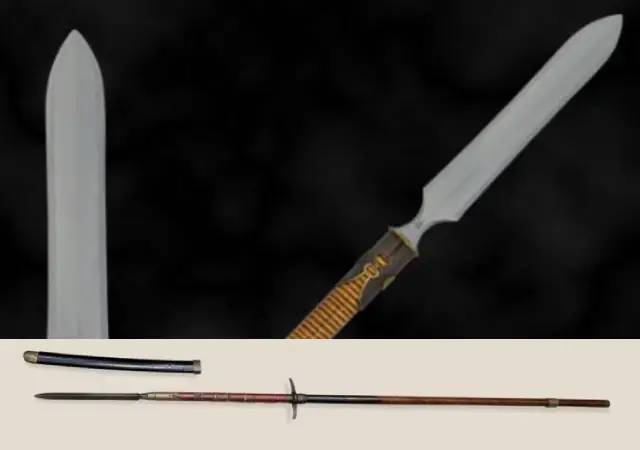
Yari is one of the traditional Japanese cold weapons (nihonto), which is a spear with a straight tip. The art of wielding a yari is known as sojutsu, a spear fighting technique.
-
Wakizashi and tanto

In the history of Japanese edged weapons there are objects that border between the concepts of “sword” and “knife”. This is especially true of the wakizashi, a short sword traditionally carried by samurai along with the katana, and the tanto, a combat knife popular among a wide range of social classes. Both items were worn behind the belt, had a short blade, and were used in close combat. However, there is a fundamental difference between the two, and it goes far beyond simple blade length.
-
Katana and Tachi
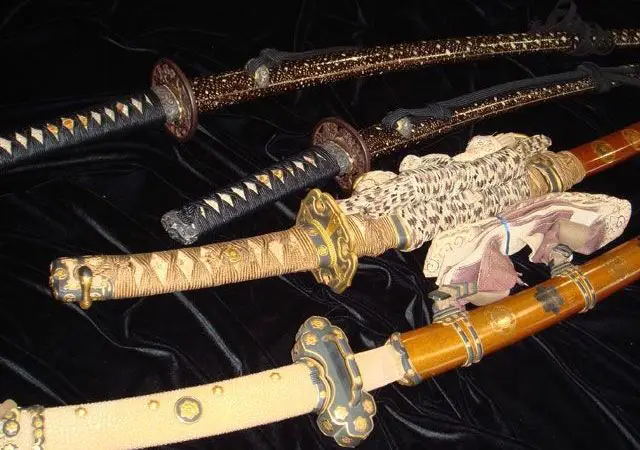
When Westerners think of Japanese swords, they often picture the iconic curved blades like the katana. However, in terms of historical precedence and prestige, it would be more accurate to reverse this image—the tachi predates the katana and traditionally held a higher status.
-
Daisho: The Origins and Evolution of the Samurai Sword Pair
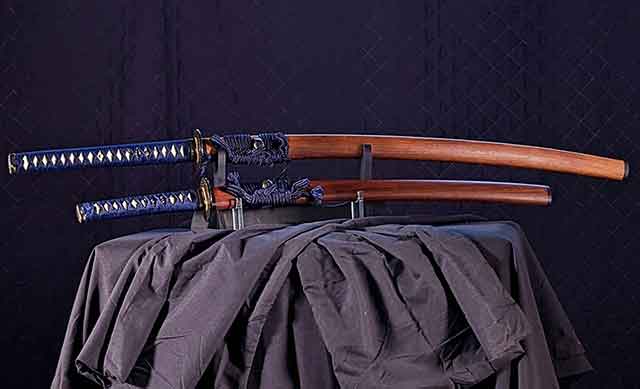
The term "daisho" finds its roots in the combination of two Japanese words: "daito," denoting a long sword, and "shoto," signifying a short sword. The combination of the words daito and shoto made the word. Daisho referred to the practice of wearing both a long and short katana together, regardless of their matching characteristics. While the classic depiction of daisho involves a katana and wakizashi (or tanto) in matching koshirae, any pairing of a longer sword with a tanto can also be considered a daisho. It later came to mean two swords with coordinated fittings. While having blades from the same swordsmith was an option, it was not a requirement for a pair to be classified as a daisho, as this would have been a more costly choice for a samurai.
-
Tanto
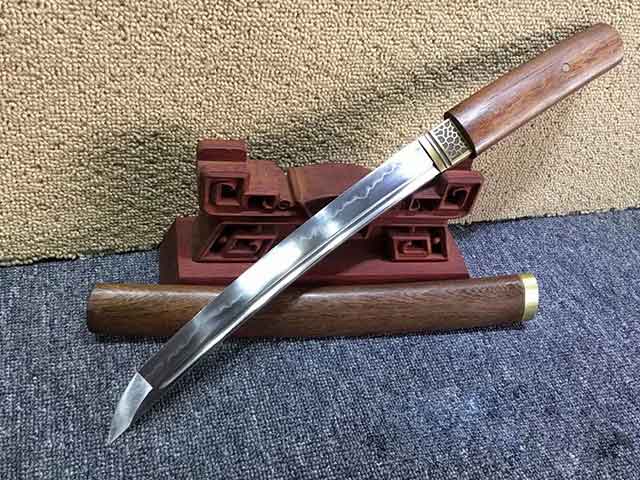
The Tanto knife is a traditional Japanese dagger that was once an integral part of the samurai warrior’s arsenal. It is known for its unique shape and cutting ability, and it is still revered by many martial artists and knife enthusiasts today.
-
Nagitana
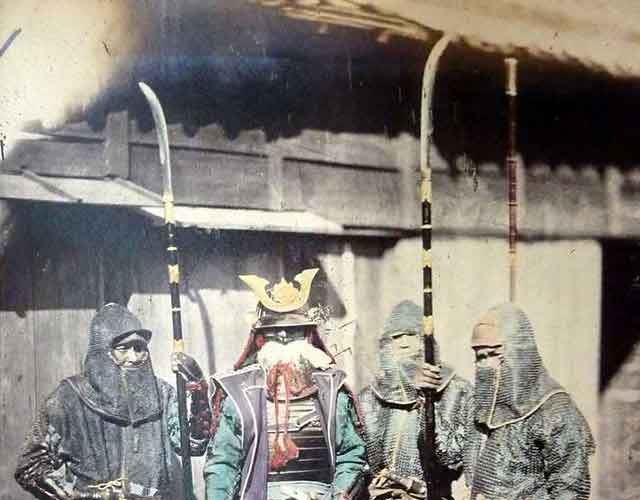
The Nagitana is a formidable weapon that was used by the samurai during feudal Japan. It was a polearm that combined the elements of a spear and a sword, making it a versatile weapon that was effective both at long range and in close combat. In this article, we will explore the history, construction, characteristics, and usage of the Nagitana.
-
Wakizashi
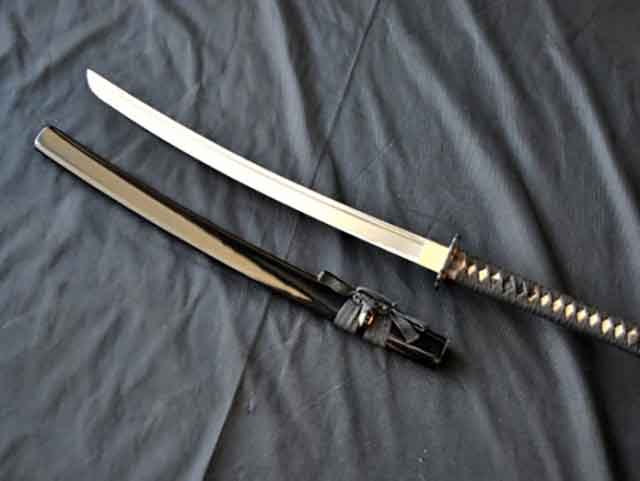
How did Wakizashi come about
The wakizashi, also known as the companion sword, is a traditional Japanese short sword that was widely used by the samurai warriors during the feudal era in Japan. This versatile sword has a long and rich history, and has played an important role in Japanese culture and warfare for centuries.

